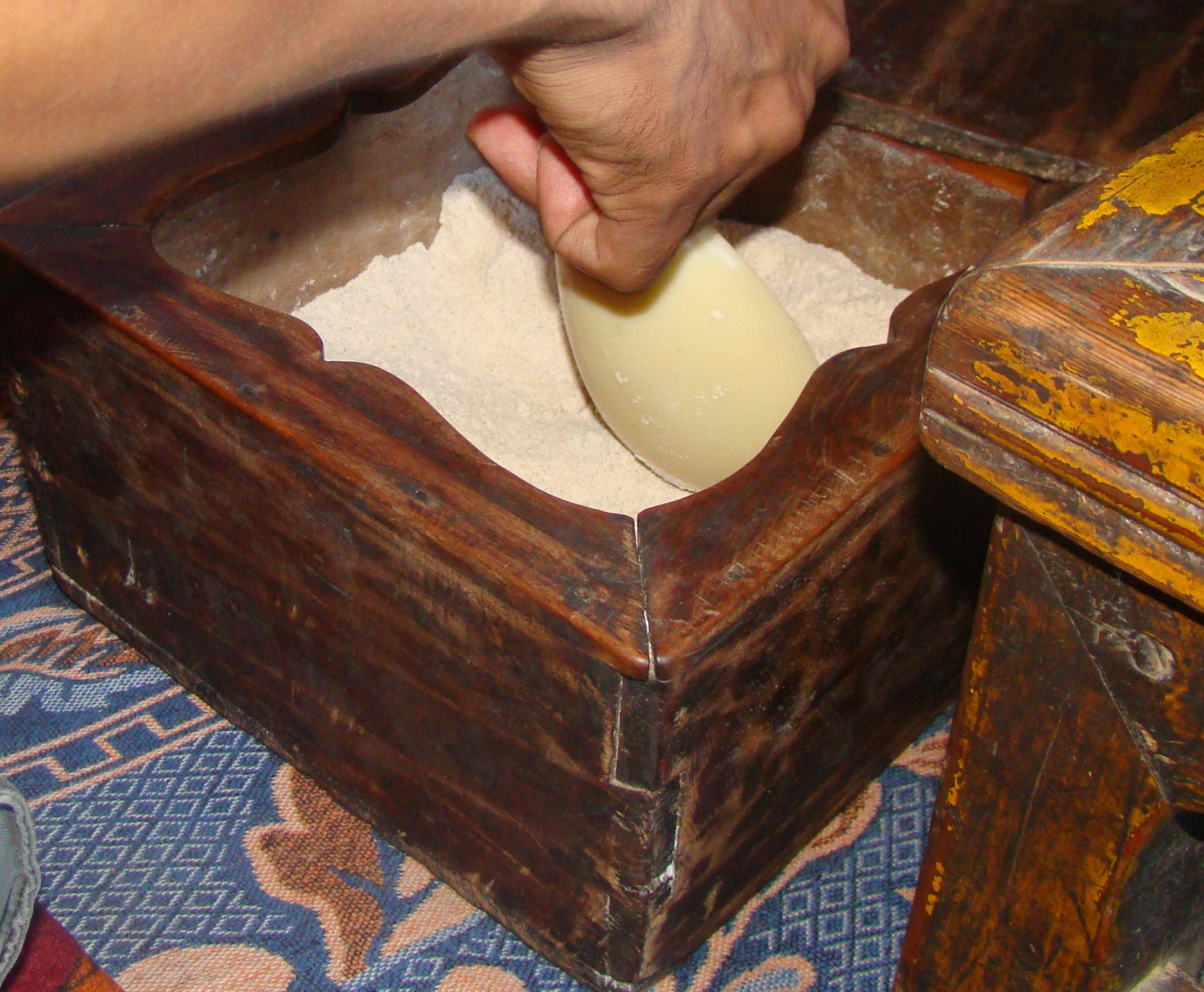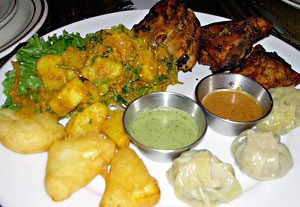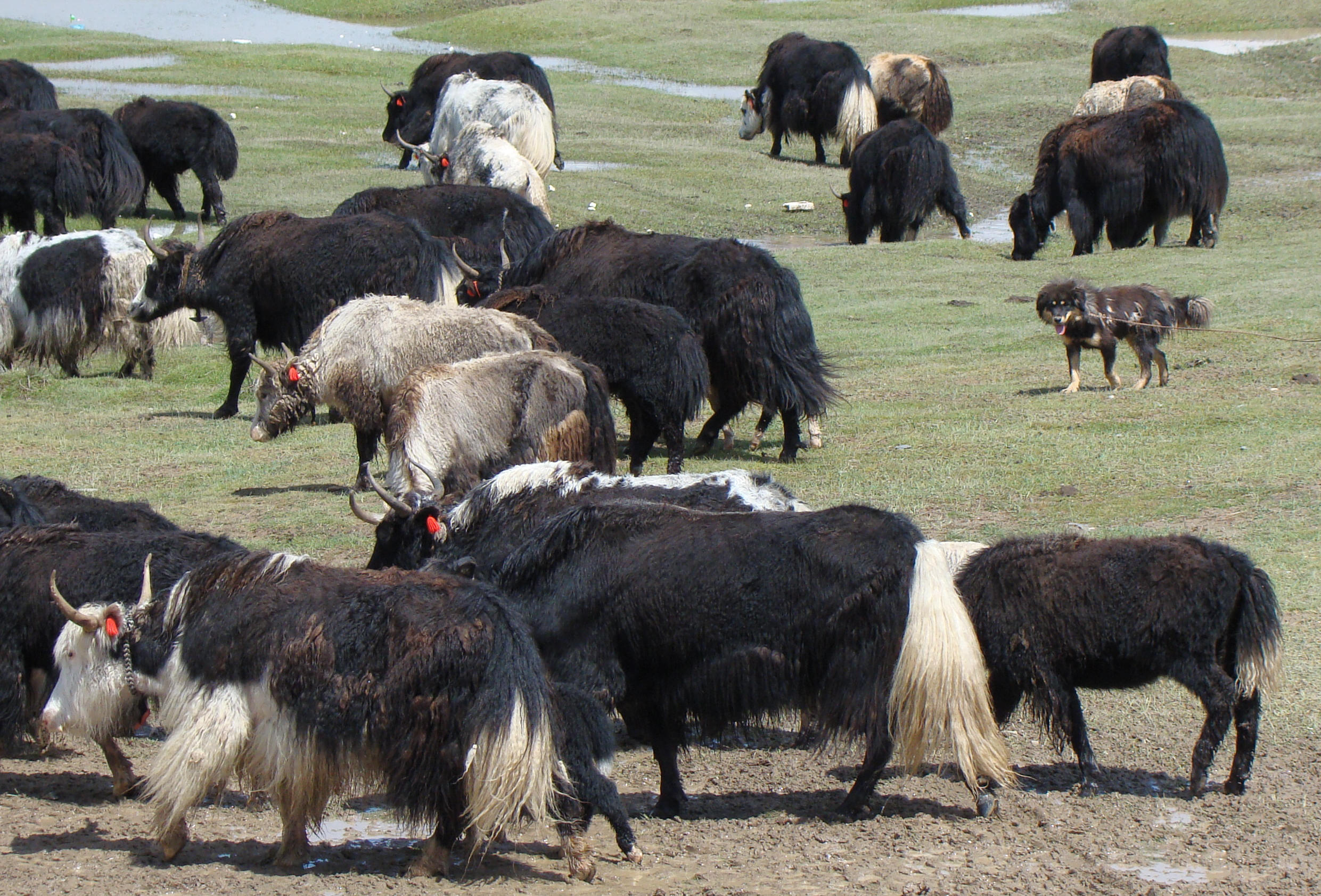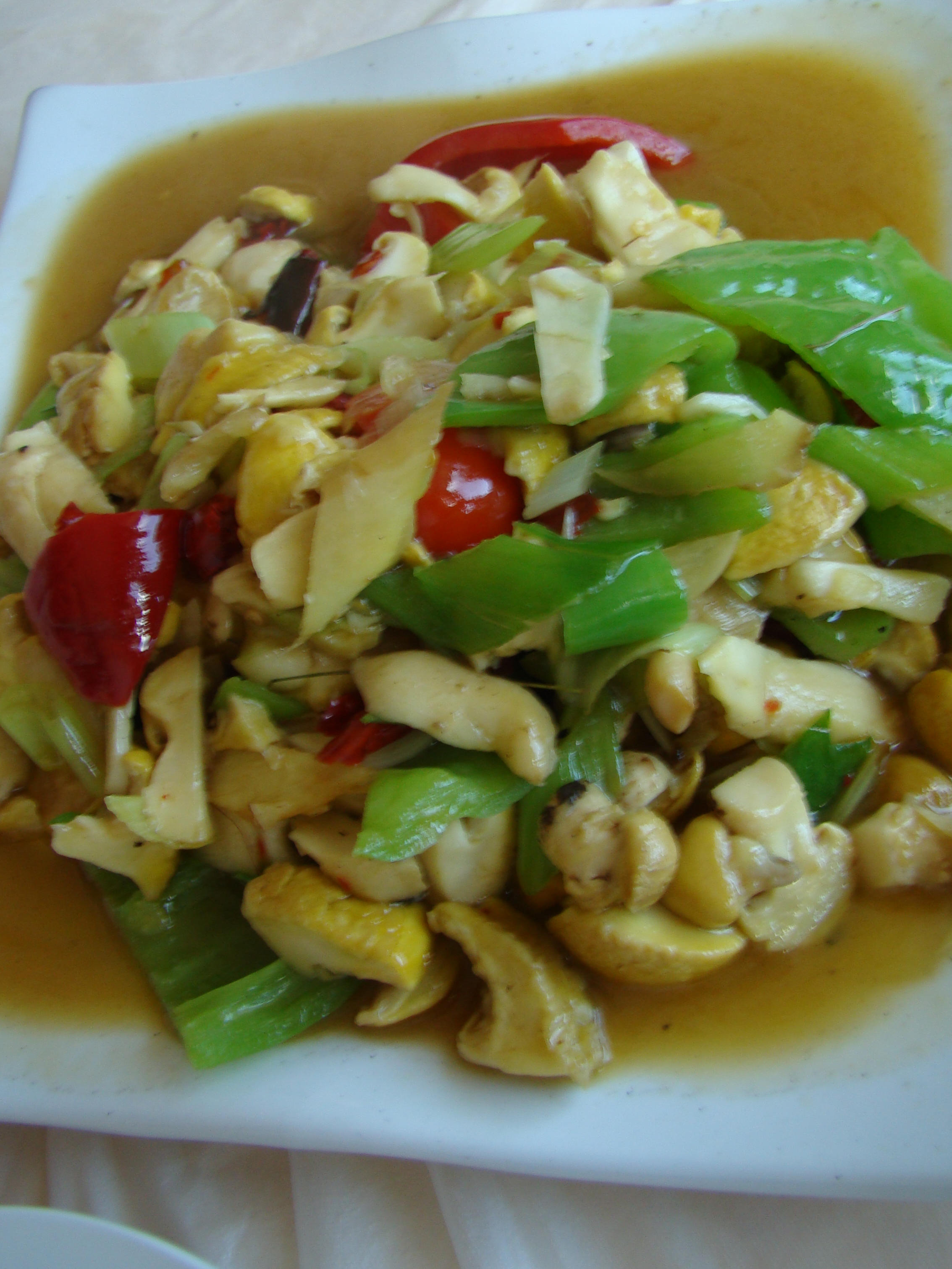Tibetans
have adapted to their high altitude lifestyle and the limits
of its terrain and weather. Many Tibetans are vegetarians
because their religion embraces all sentient beings as
possible past relatives and therefore they tend to restrain
from the killing of animals for survivals. On the other
hand, many Tibetans eat yak meat, although they usually do
not participate in the slaughter, rather paying a local
butcher to do such work. With a very cold winter climate,
meat offers the strength, warmth and stamina needed for
nomads to survive.
 Barley
has always been the most important crop for the Tibetan
diet. Ground and roasted, barley makes Tsampa, their number
one staple food source. Tsampa is a mix of roasted barley
and yak butter or tea, a sweet dough eaten as a snack or a
meal with yak butter tea, preferably. Barley
has always been the most important crop for the Tibetan
diet. Ground and roasted, barley makes Tsampa, their number
one staple food source. Tsampa is a mix of roasted barley
and yak butter or tea, a sweet dough eaten as a snack or a
meal with yak butter tea, preferably.
 Tsampa
can also be rolled into noodles or used to make steamed
dumplings, known as Momos. Tsampa
can also be rolled into noodles or used to make steamed
dumplings, known as Momos.
Raising yaks, in many
instances, provides Tibetans with their livelihood. Yak
meat, yak yoghurt, butter, yak butter tea (salted),
sweet-butter tea, cheese, yak hair tents, yak rope, and
other uses from the carcass are indispensable to the
existence of nomads. Commonly, yak butter tea made with
butter, water and salt is taken up to 50 times a day on the
range. Highly tasty is the Tibetan sweet tea found in all
tea shops in Tibetan areas. A whole pot costs about a
quarter, at least in 2008 it did. Once you've tasted the
homemade Tibetan yak yoghurt from the farm, you'll never
want store-bought yoghurt again! But, be careful eating off
the street. There are few health regulations and even
Tibetans get stomach problems from yoghurt that's been
sitting under the sun too long!
Meat dishes are usually made
from yak (high altitude cow with long hair), goat or mutton.
Try the delicious mutton dish cooked on stone
in Lhasa at the Makeyama Restaurant on the
Barkhor (highly recommended dish!)
Tibetans started raising sheep as the Chinese demand
increased, even though sheep tend to destroy the grasslands
by pulling the grass out when eating.
 Yaks,
on the other hand, lick the blade off the the grass and
leave it to re-grow next season. Tibetans often dry their
meat and carry it along on their journeys. You will notice
Tibetan women and men carrying a knife from their belt
buckle. This is to cut meat when needed. A spicy yak stew
with potatoes is fairly common. Since Mustard seed is
cultivated in Tibet, it is also an important ingredient of
Tibetan cooking. Yaks,
on the other hand, lick the blade off the the grass and
leave it to re-grow next season. Tibetans often dry their
meat and carry it along on their journeys. You will notice
Tibetan women and men carrying a knife from their belt
buckle. This is to cut meat when needed. A spicy yak stew
with potatoes is fairly common. Since Mustard seed is
cultivated in Tibet, it is also an important ingredient of
Tibetan cooking. |
|
Tibetan food for the most part is mildly spiced with salt,
mustard seed, butter, shallots or garlic. Commonly served
among nomads and poorer Tibetans are flavorless flour buns,
fried greens (more like grass) in garlic, and soups (usually
made with delicious home-made noodles and a few yak snips).
Unlike Western cuisine, Tibetan taste buds don't require any
sort of richness, spice or gourmet taste. Food is seen as
something of a necessity, not necessarily to be savored, but
simply to fill the stomach and strengthen the body for more
work. Try it all while visiting wild Tibet! |
Salted Butter Tea
Sweet Butter Tea
Hot Water
Green Tea
Barley wine is often reserved for festivals and celebrations |